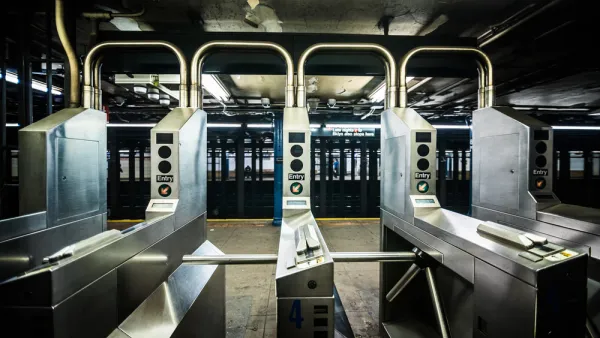With her Foodprint project, Nicola Twilley wondered what one could learn about a city by looking at it through the lens of food. In this piece on Urban Omnibus she shares what she's learned.
Through two events -- one in New York and another in Toronto -- Twilley and co-organizer Sarah Rich invited speakers and eperts to discuss how food shapes the urban environment and how urban policies can be improved to reshape the food systems that feed our cities.
"Many extraordinary and peculiar factoids, certainly: enough to keep us well-stocked at dinner parties for years to come. Toronto, for example, is the second largest urban food processing hub in North America (after Chicago) and its food factories still occasionally overwhelm certain neighborhoods with the smell of roasting coffee beans, freshly-slaughtered beef, or potato and leek soup. We also learned that turning just 10% of NYC's private backyards over to urban agriculture would produce 113 million lbs of vegetables each year, or enough to feed 700,000 people at current rates of consumption.
We have also confirmed one of the Foodprint Project's founding premises: the best food conversations are hyper-interdisciplinary. As Nevin Cohen, urban planner and panelist at Foodprint NYC, put it, "Food is a social justice issue and a public health issue; it's also an economic development issue, it's a transportation issue, it's a regional planning issue, it's an ecological issue." By inviting panelists whose work engages deeply with the city's food systems, but who come from widely differing perspectives - such as a First Nations fisherman, a food scientist working to redesign salt crystals, an architect using urban agriculture to retrofit ‘60s tower blocks, and the health official in charge of drafting Toronto's first city-wide food policy - we've created new connections, both personal and conceptual."
FULL STORY: Foodprint City

National Parks Layoffs Will Cause Communities to Lose Billions
Thousands of essential park workers were laid off this week, just before the busy spring break season.

Retro-silient?: America’s First “Eco-burb,” The Woodlands Turns 50
A master-planned community north of Houston offers lessons on green infrastructure and resilient design, but falls short of its founder’s lofty affordability and walkability goals.

Delivering for America Plan Will Downgrade Mail Service in at Least 49.5 Percent of Zip Codes
Republican and Democrat lawmakers criticize the plan for its disproportionate negative impact on rural communities.

Test News Post 1
This is a summary

Test News Headline 46
Test for the image on the front page.

Balancing Bombs and Butterflies: How the National Guard Protects a Rare Species
The National Guard at Fort Indiantown Gap uses GIS technology and land management strategies to balance military training with conservation efforts, ensuring the survival of the rare eastern regal fritillary butterfly.
Urban Design for Planners 1: Software Tools
This six-course series explores essential urban design concepts using open source software and equips planners with the tools they need to participate fully in the urban design process.
Planning for Universal Design
Learn the tools for implementing Universal Design in planning regulations.
EMC Planning Group, Inc.
Planetizen
Planetizen
Mpact (formerly Rail~Volution)
Great Falls Development Authority, Inc.
HUDs Office of Policy Development and Research
NYU Wagner Graduate School of Public Service





























